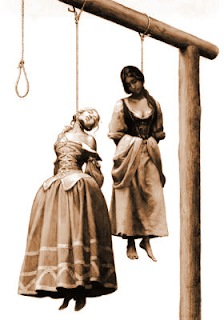Two cases from 1870s may serve as a guidepost for the current interplay between our nation’s xenophobic laws and courts that protect oppressed minorities from hateful discrimination.
In The Twenty-Two Prostitutes (also known as in re Ah Fong; see accompanying picture), a state law empowered a local official to board incoming ships to administer a “character” test to hopeful immigrants. In this case, after conducting his examination, the immigration official declared that Ah Fong and 21 other Chinese women were “lewd and debauched women.” The women were denied entry and were about to be forced to return to China, against their will. An emergency appeal was held by Supreme Court Justice Field. He ruled that a state may exclude foreigners when they are known convicts or public health hazards (e.g., lepers), but cannot discriminate against the citizens of a foreign treaty power as a class.
He said: “I am aware of the very general feeling prevailing in this state against the Chinese, and in opposition to the extension of any encouragement to their immigration hither. It is felt that the dissimilarity in physical characteristics, in language, in manners, religion and habits, will always prevent any possible assimilation of them with our people. Admitting that there is ground for this feeling, it does not justify any legislation for their exclusion, which might not be adopted against the inhabitants of the most favored nations of the Caucasian race, and of Christian faith….
I have little respect for that discriminating virtue which is shocked when a frail child of China is landed on our shores, and yet allows the bedizened and painted harlot of other countries to parade our streets and open her hells in broad day, without molestation and without censure.”
This anti-immigrantion law sounds like President Trump’s class-wide travel ban/Muslim ban.
In another anti-Chinese law, San Francisco required that anyone imprisoned in a city jail would be required to have his hair cut to one inch or shorter. Neutral on its face, the law was designed to humiliate Chinese men who shaved their heads except for queues or pony-tails.
Justice Field wrote a Supreme Court opinion that ruled that San Francisco’s hair regulation violated the equal protection rights of Chinese immigrants. In How Ah Kow v. Noonan (with accompanying picture of a different Chinese man with traditional queues)— after a jailer clipped the queue of a Chinese immigrant— he said “the deprivation of the queue is regarded by them as a mark of disgrace, and is attended, according to their religious faith, with misfortune and suffering after death; that the [jailer] knew of this custom and religious faith of the Chinese, and knew also that the plaintiff venerated the custom and held the faith; yet, in disregard of his rights, inflicted the injury complained of; and that the plaintiff has, in consequence of it, suffered great mental anguish, been disgraced in the eyes of his friends and relatives, and ostracized from association with his countrymen; and that hence he has been damaged to the amount of ten thousand dollars.
The cutting off the hair of every male person within an inch of his scalp, on his arrival at the jail, was not intended and cannot be maintained as a measure of discipline or as a sanitary regulation. The act by itself has no tendency to promote discipline, and can only be a measure of health in exceptional cases. Had the ordinance contemplated a mere sanitary regulation it would have been limited to such cases and made applicable to females as well as to males,…
The claim, however, put forth that the measure was prescribed as one of health is notoriously a mere pretense. A treatment to which disgrace is attached, and which is not adopted as a means of security against the escape of the prisoner, but merely to aggravate the severity of his confinement, can only be regarded as a punishment additional to that fixed by the sentence. If adopted in consequence of the sentence it is punishment in addition to that imposed by the court; if adopted without regard to the sentence it is wanton cruelty.
One lesson: Our times are not too much different from the “Yellow Peril” of the 1870s. Another lesson: Courts can only do so much to stop discrimination. These two opinions were largely ignored in a wave of anti-Chinese laws. Finally, there is nothing new about a law that has “anti”-outgroup intent and is defended by facially neutral justifications, such as the need to protect Americans from outside threats.

























